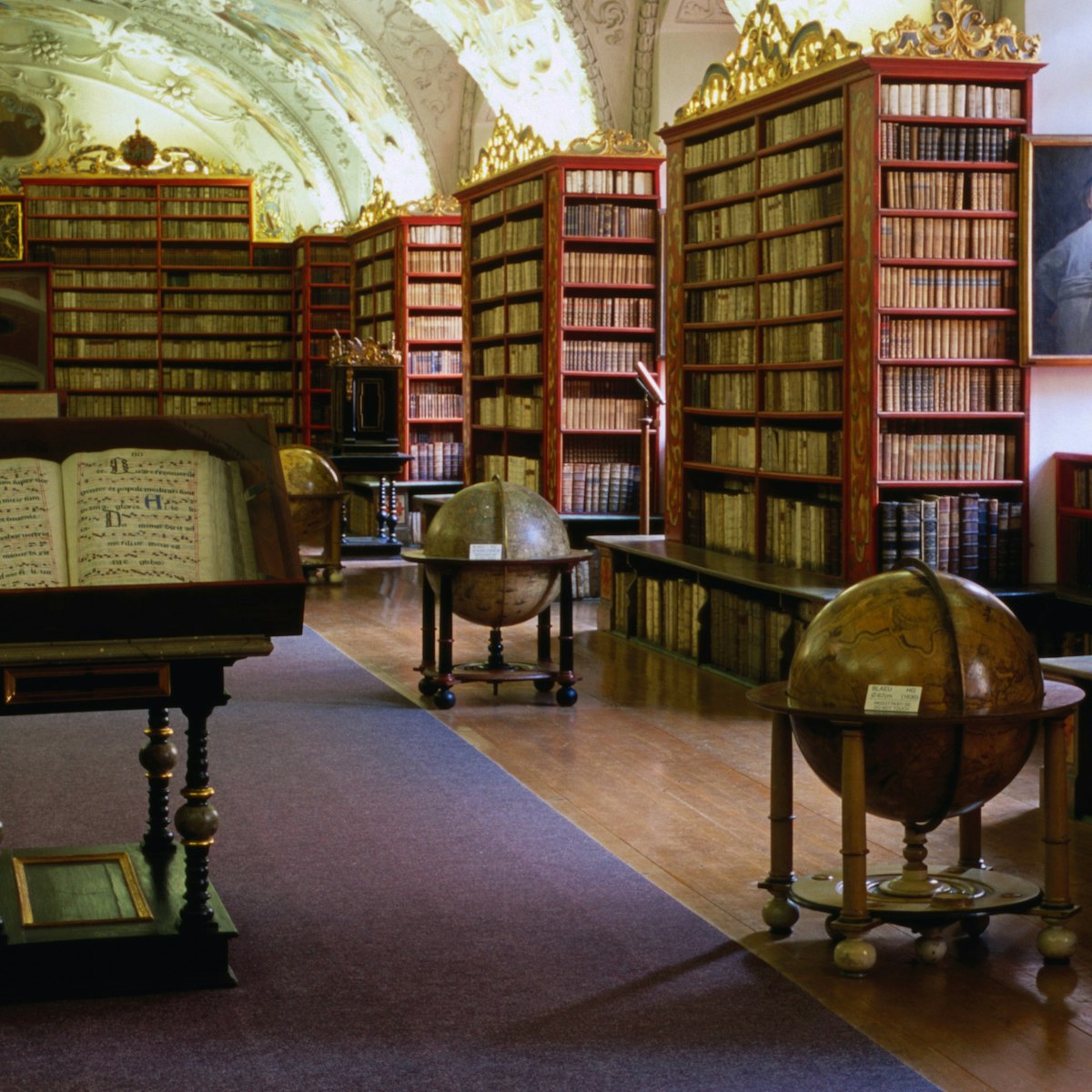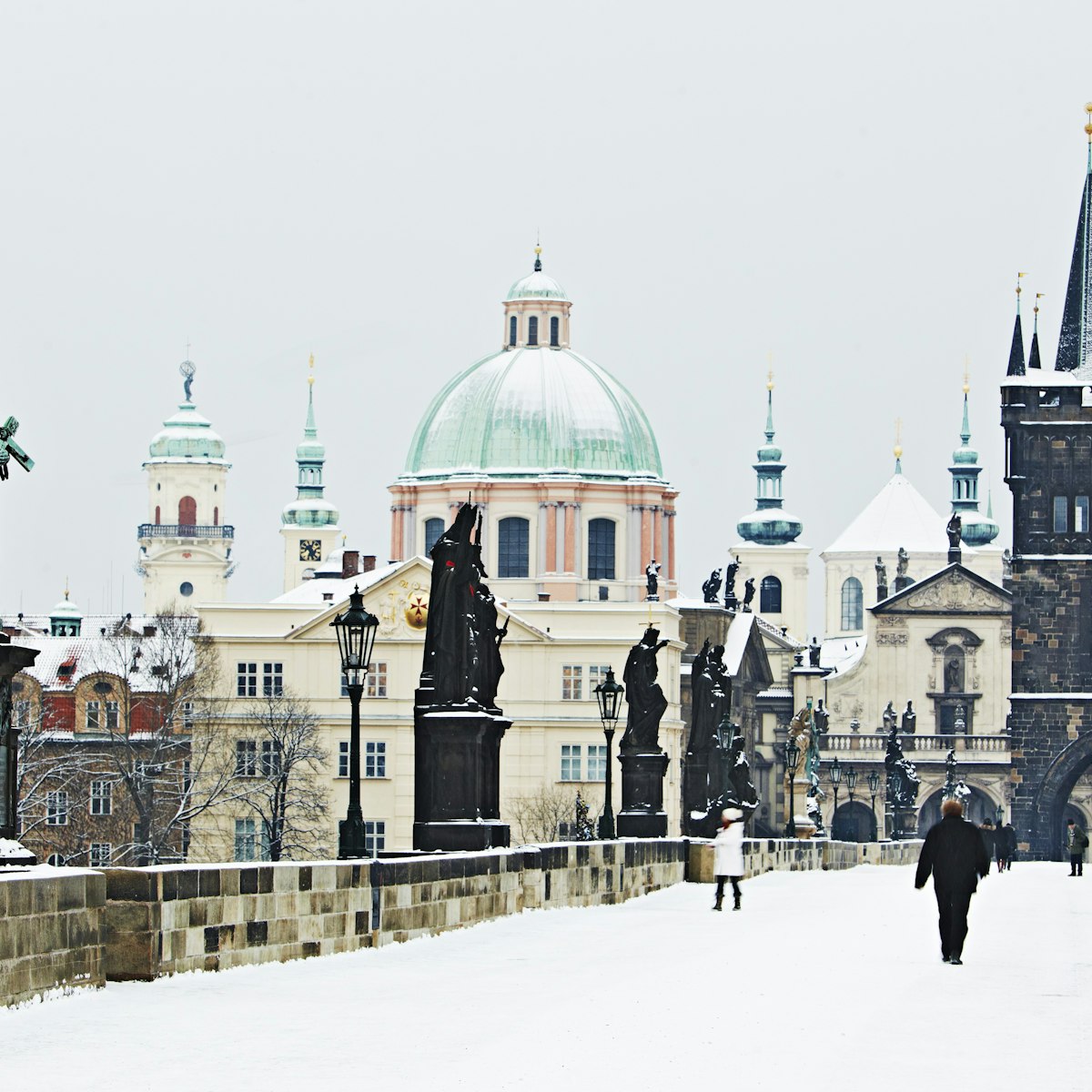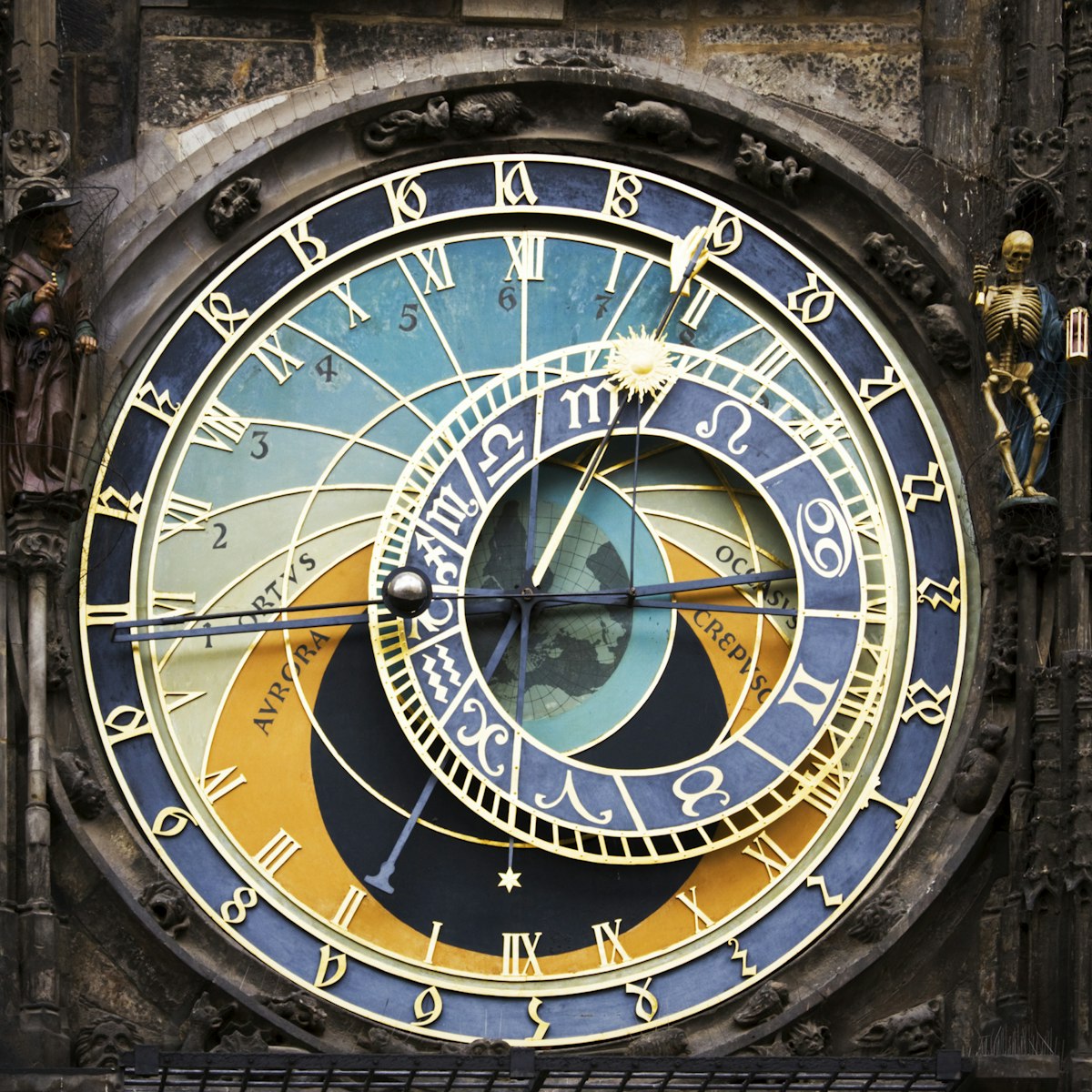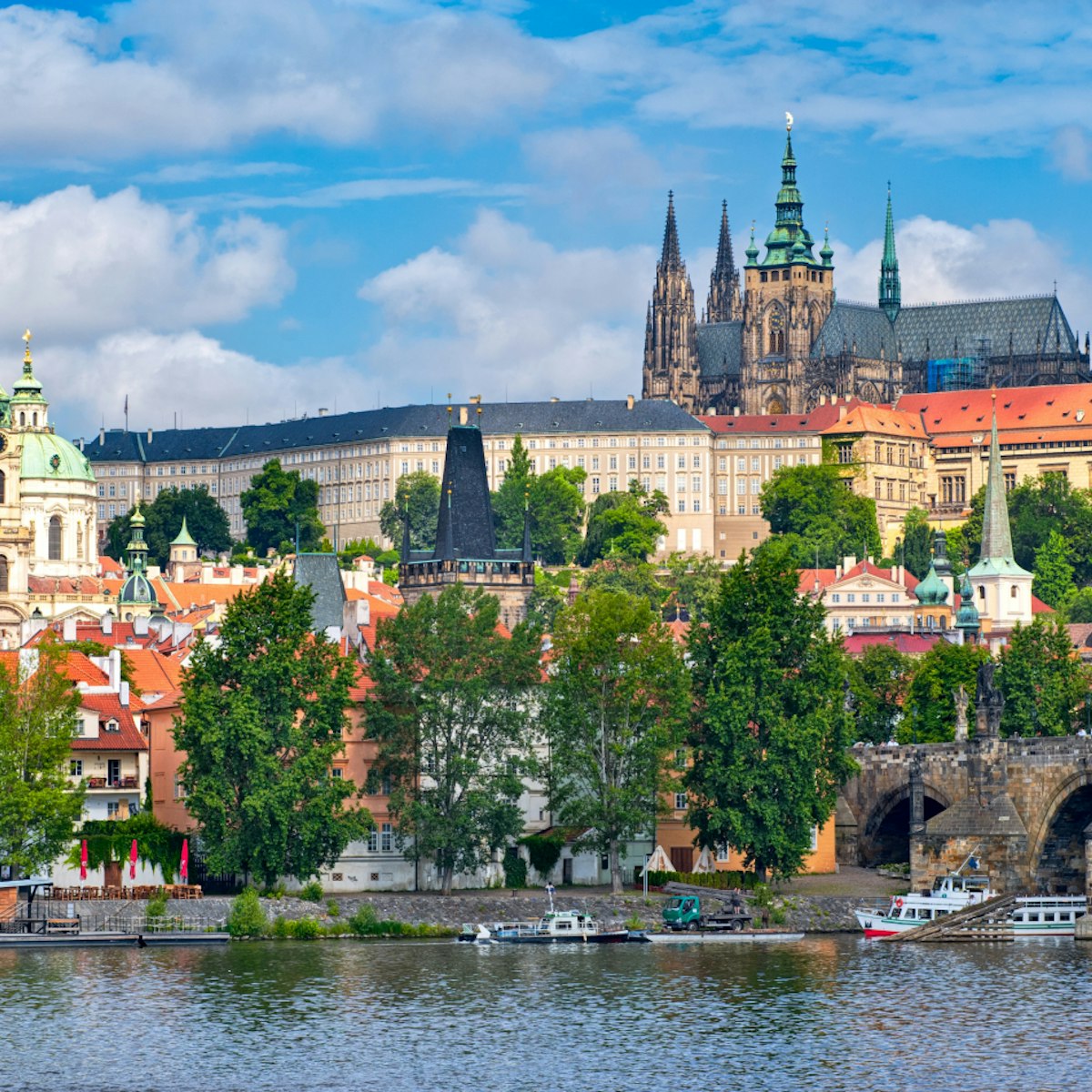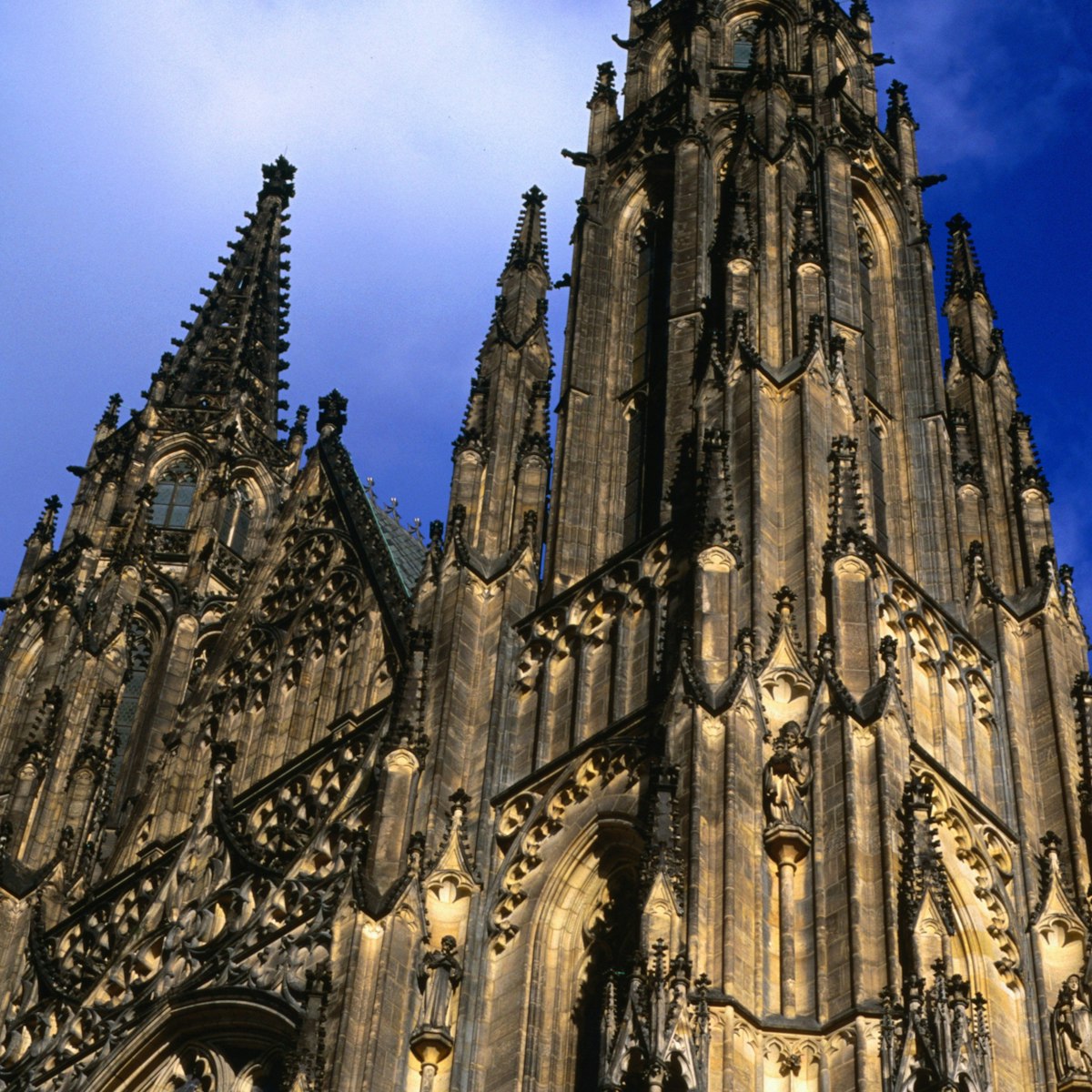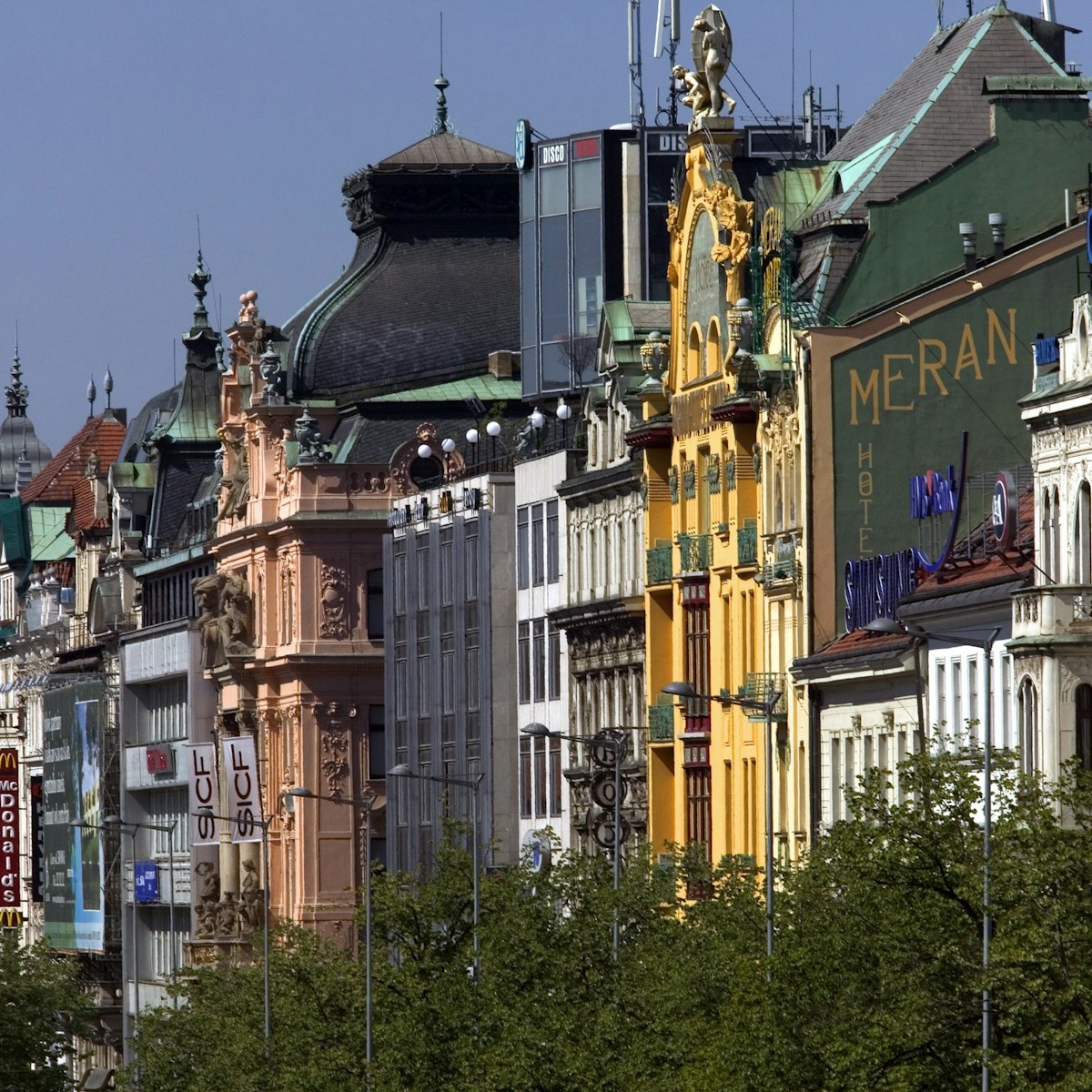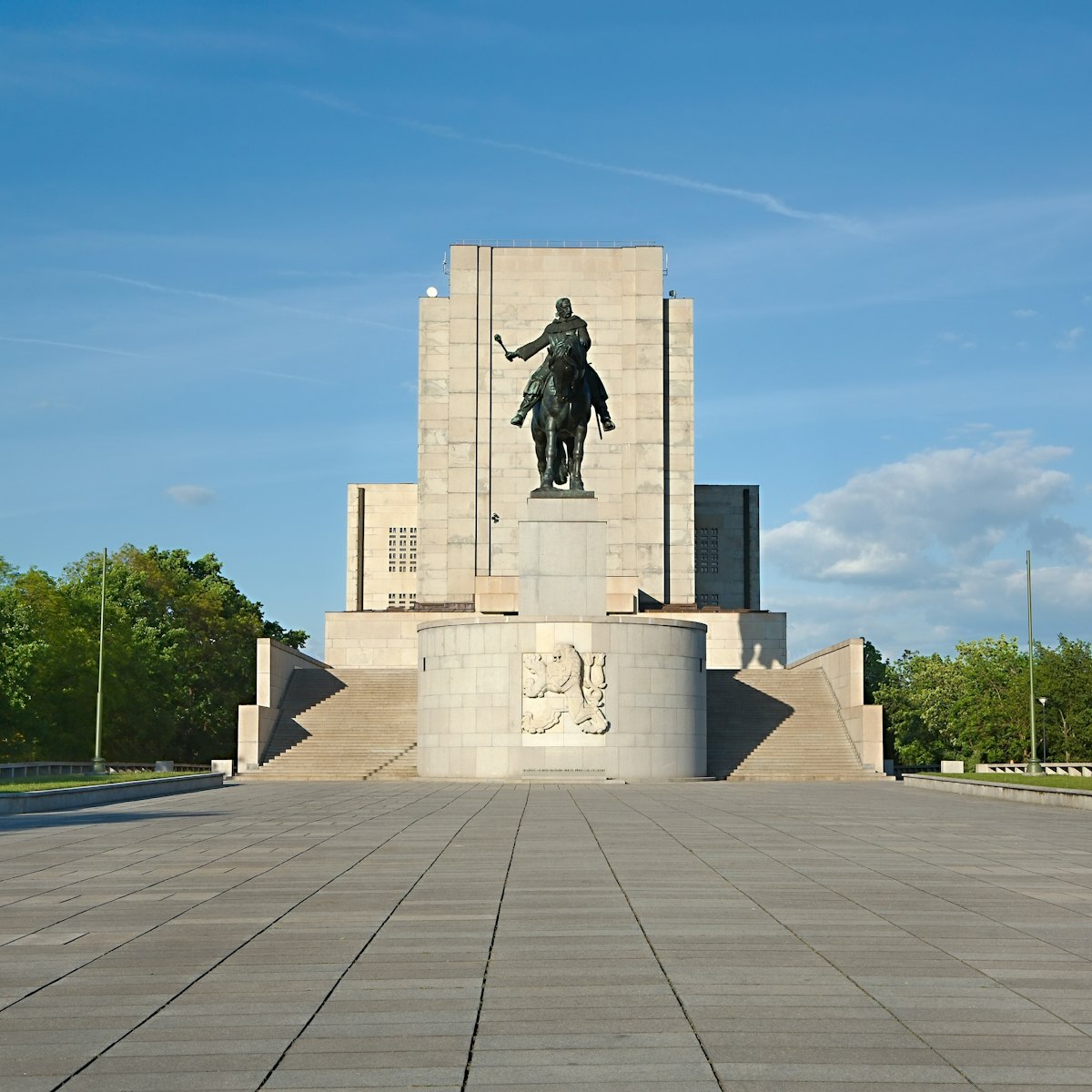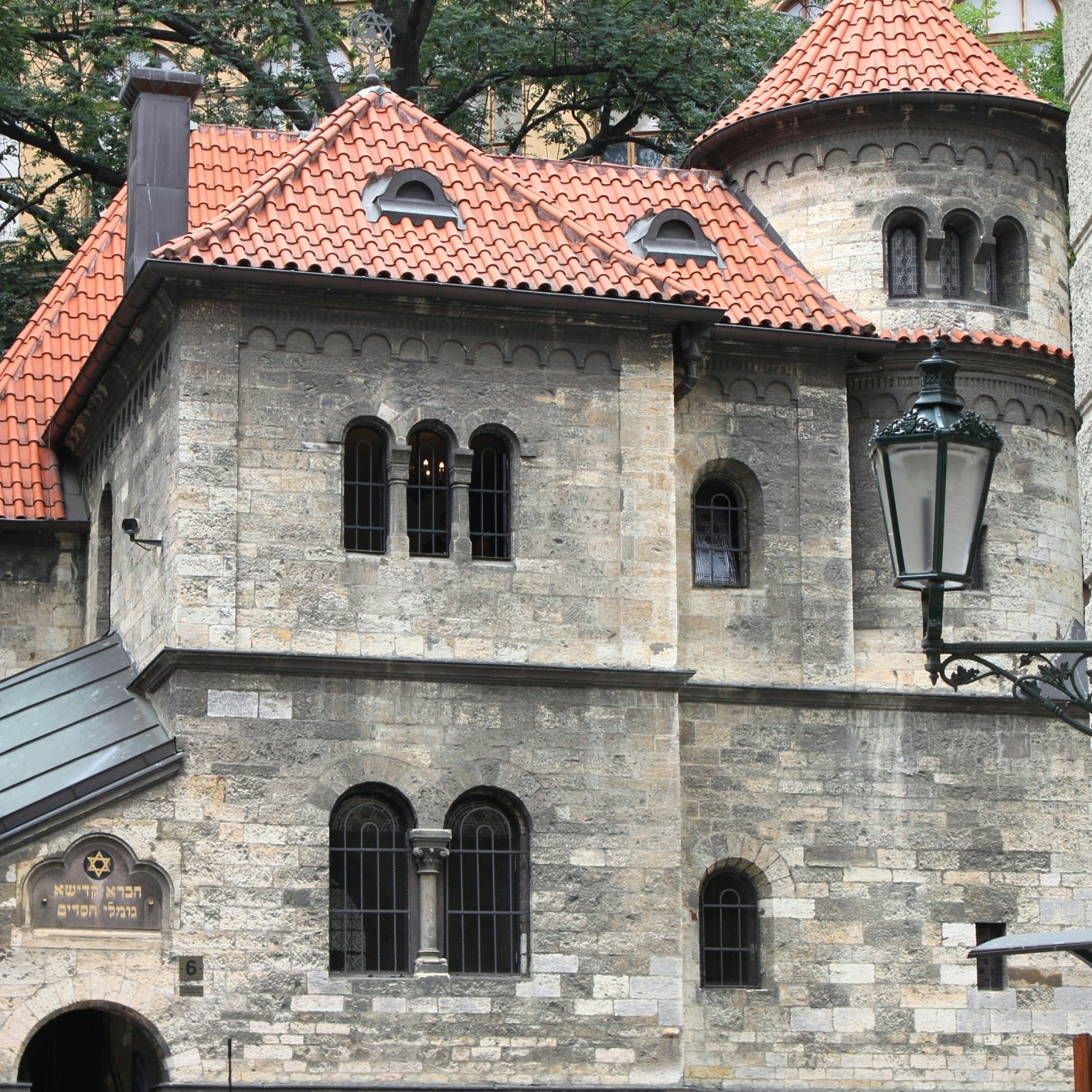
Prague’s most exuberantly art-nouveau building is a labour of love, with every detail of its design and decoration carefully considered, and every painting and sculpture loaded with symbolism. The restaurant and cafe here are like walk-in museums of art-nouveau design, while upstairs there are half a dozen sumptuously decorated halls that you can visit by guided tour. You can look around the lobby and the downstairs bar for free, or book a guided tour in the information centre.
The Municipal House stands on the site of the Royal Court, seat of Bohemia’s kings from 1383 to 1483 (when Vladislav II moved to Prague Castle), which was demolished at the end of the 19th century. Between 1906 and 1912 this magnificent art-nouveau edifice was built in its place – a lavish joint effort by around 30 leading artists of the day, creating a cultural centre that was the architectural climax of the Czech National Revival.
The mosaic above the entrance, Homage to Prague, is set between sculptures representing the oppression and rebirth of the Czech people. Other sculptures ranged along the top of the facade represent history, literature, painting, music and architecture. You pass beneath a wrought-iron and stained-glass canopy into an interior that is art nouveau down to the doorknobs.
First stop on the guided tour is the Smetana Hall, Prague’s biggest concert hall, with seating for 1200 beneath an art-nouveau glass dome. The stage is framed by sculptures representing the Vyšehrad legend (to the right) and Slavonic dances (to the left). On 28 October 1918 an independent Czechoslovak Republic was declared in the Smetana Hall, and in November 1989 meetings took place here between the Civic Forum and the Jakeš regime. The Prague Spring music festival always opens on 12 May, the day the Czech composer Smetana died, with a procession from Vyšehrad to the Municipal House followed by a gala performance of his symphonic cycle Má vlast (My Country) in the Smetana Hall.
Several impressive official apartments follow, but the highlight of the tour is the octagonal Lord Mayor’s Hall (Primatorský sál), the windows of which overlook the main entrance. Every aspect of its decoration was designed by Alfons Mucha, who also painted the superbly moody murals that adorn the walls and ceiling. Above you is an allegory of Slavic Concord, with intertwined figures representing the various Slavic peoples watched over by the Czech eagle. Figures from Czech history and mythology, representing the civic virtues, occupy the spaces between the eight arches, including Jan Hus as Spravedlnost (justice), Jan Žižka as Bojovnost (military prowess) and the Chodové (medieval Bohemian border guards) as beady-eyed Ostražitost (vigilance).
 Publish for free
Publish for free

 zzdtravel
zzdtravel

